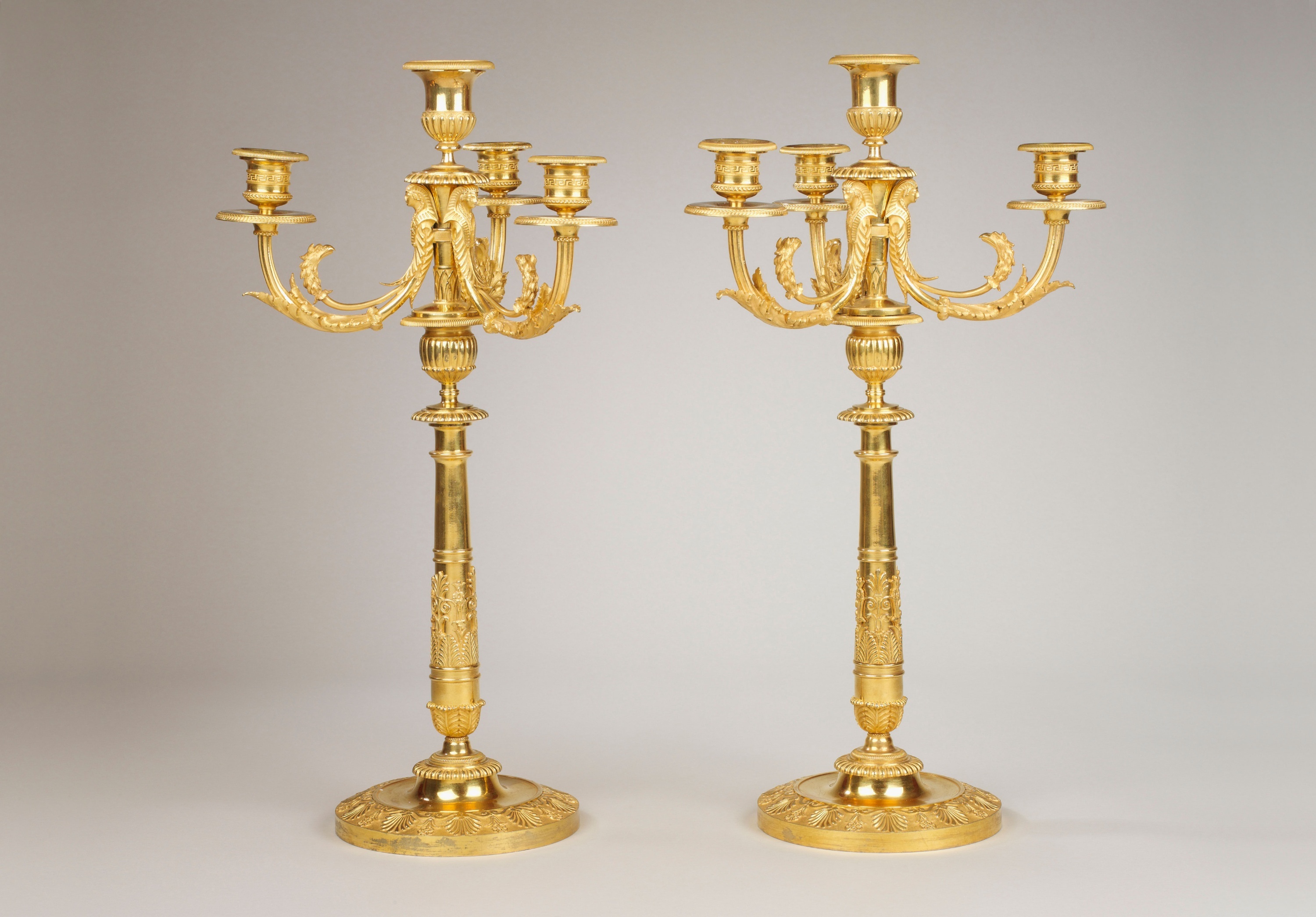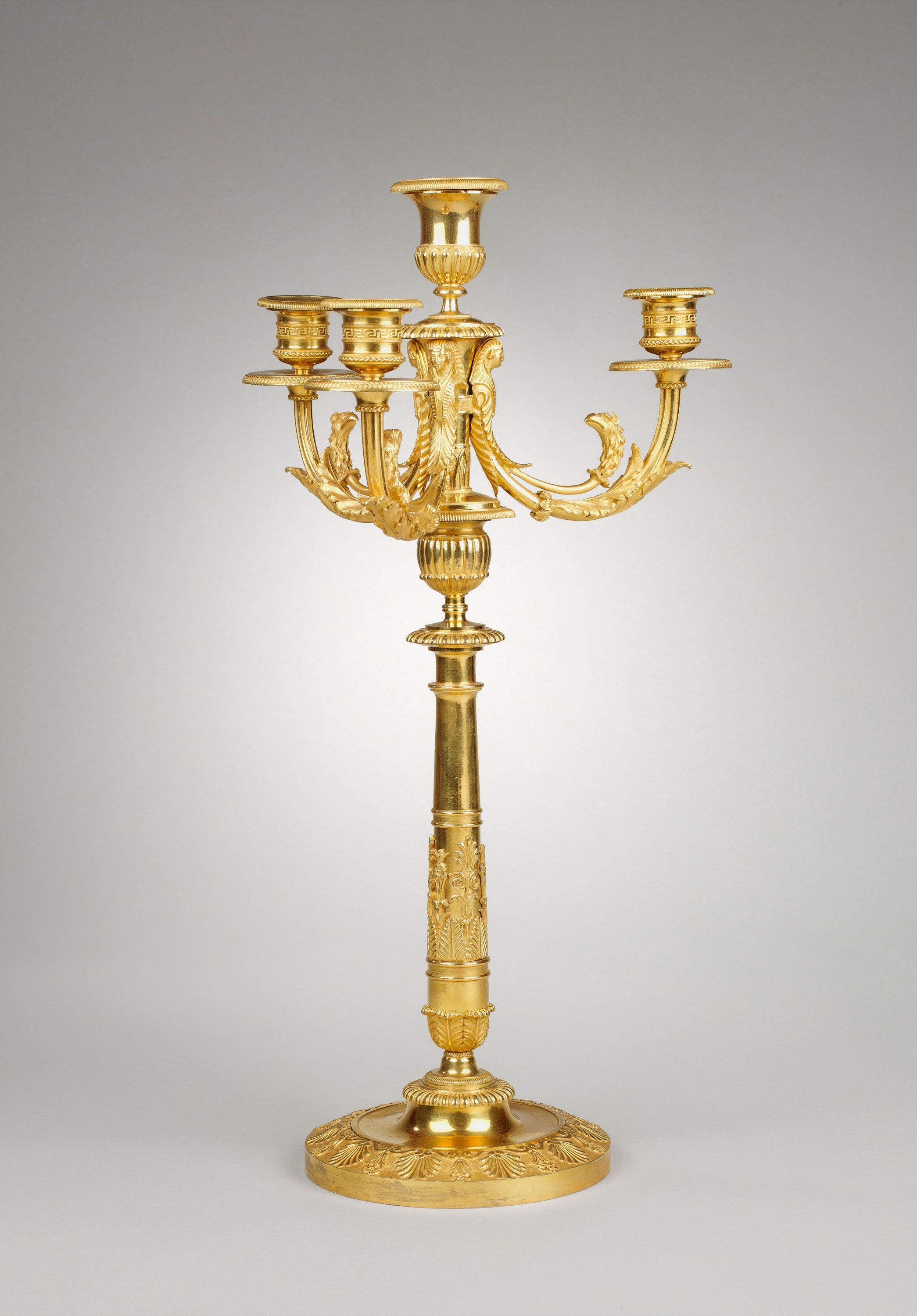

Circa 1800


Goldsmith Pierre-Philippe Thomire (1751-1843) drew recognition as a skilled maker of bronze mounts at this time. He began his career under the sculptors Pajou and Houdon, casting portrait bronzes, then turned to work as a ciseleur under Gouthière. In 1783 he was chosen to succeed Duplessis at the Sèvres manufactory where he specialized in creating bronze mounts for porcelain. Production at Sèvres almost ceased during the Revolution, but was revived under the Directoire and Thomire was able to resume his decorative bronze work.
Jean-Neree Ronfort (Lucy Morton, 1999, no. 57, pp.153-7) says of Thomire: “The unique characteristics of Thomire’s work and his immense talent arise from a combination of skills possessed by no other craftsmen of his period. His was the art of the sculptor, taught by both Auguste Pajou and Jean-Antoine Houdon, the art of the founder who, according to Houdon, was the only craftsman to achieve perfection, the art of the chaser who was taught by his father and the art of the gilder. Due to the restrictions of guild regulations he was not able to develop the latter skill to its full potential until after the Revolution but again, he attained perfection.”
| DIMENSIONS | CM | INCHES |
|---|---|---|
| Width: | 52 | 20 |
| Height: | 26 | 10 |